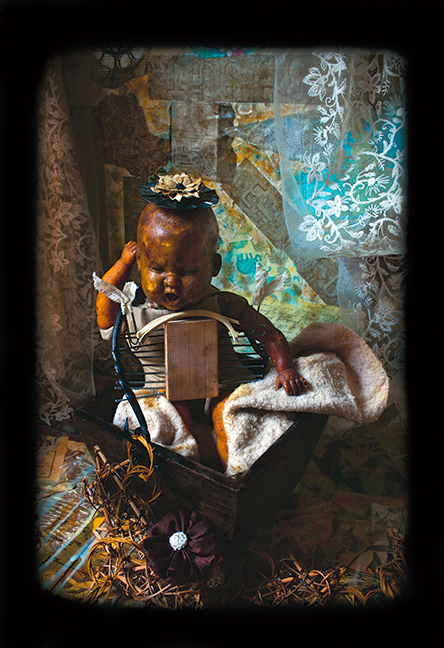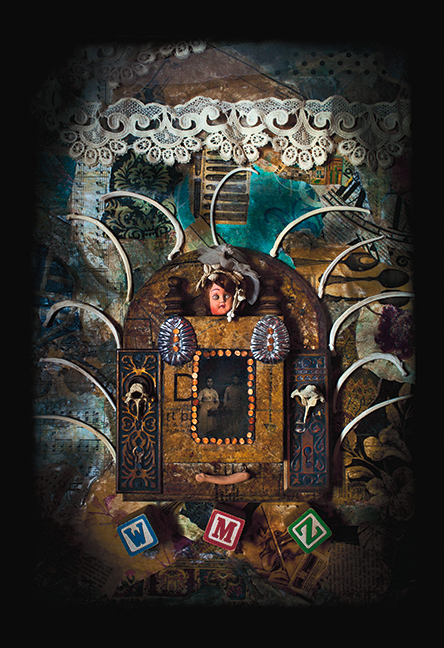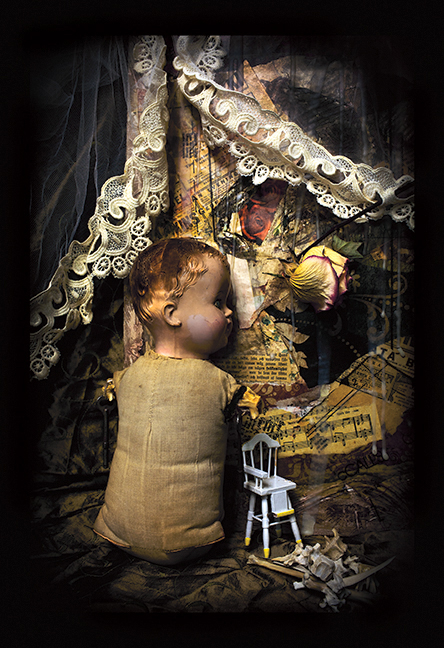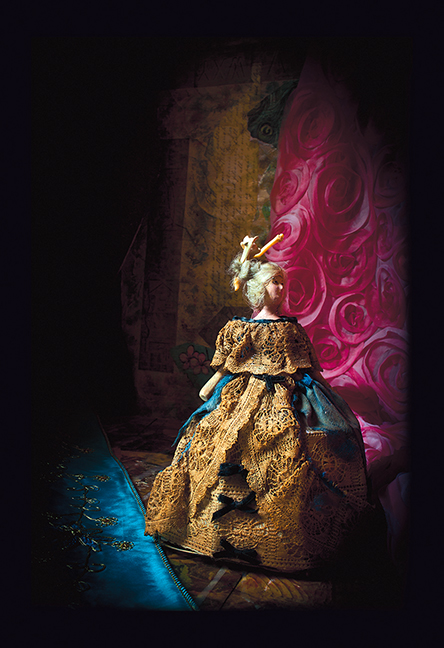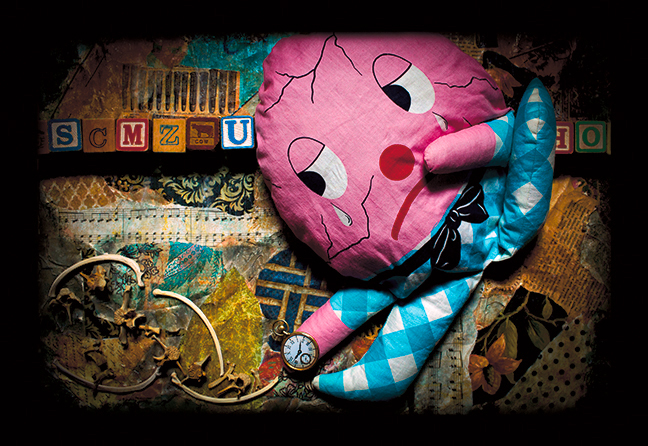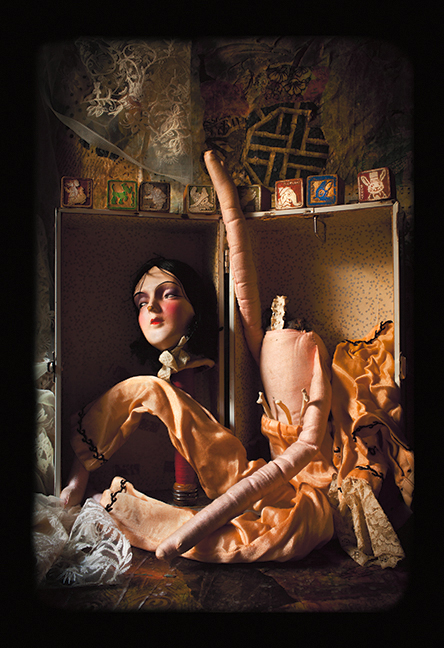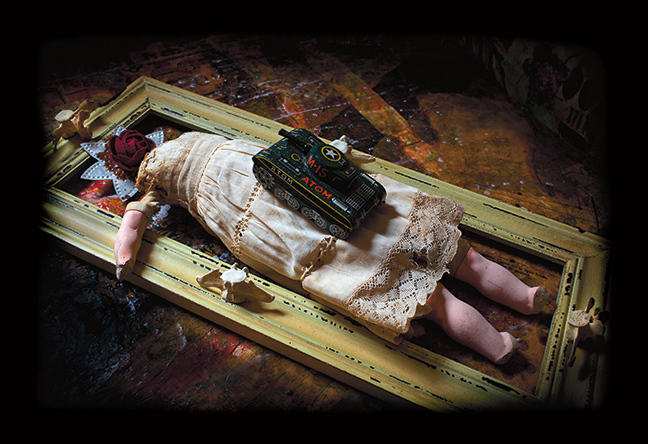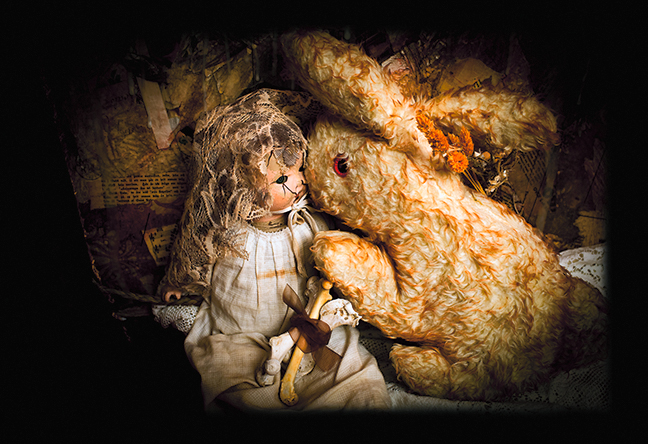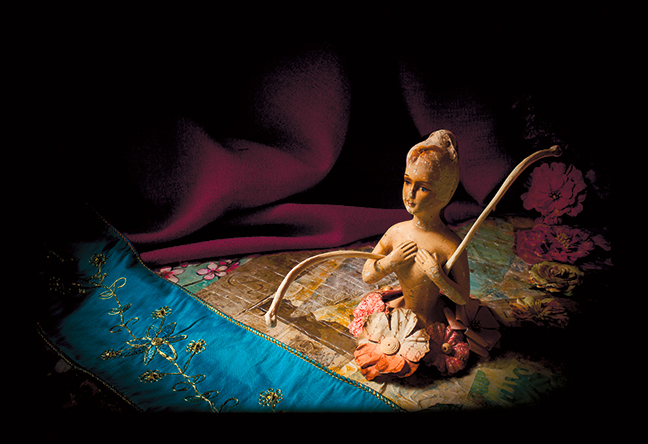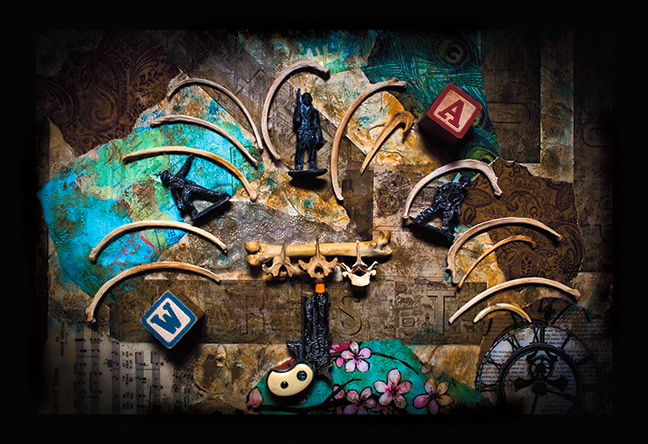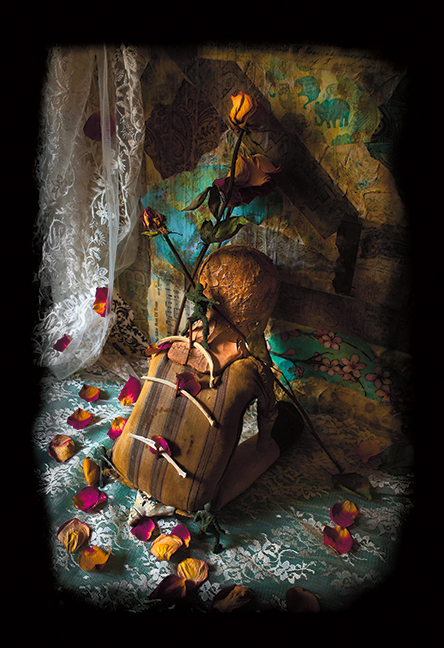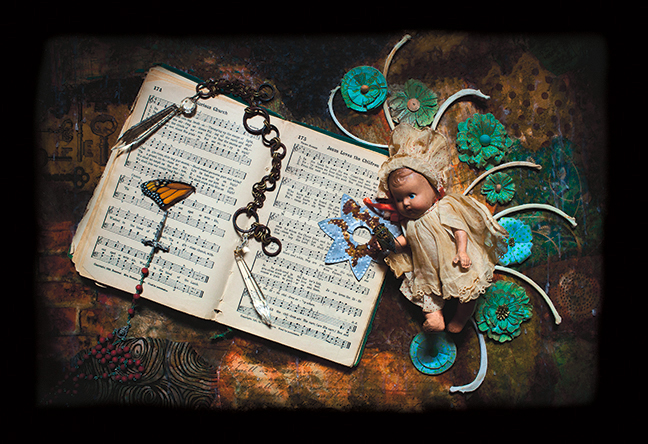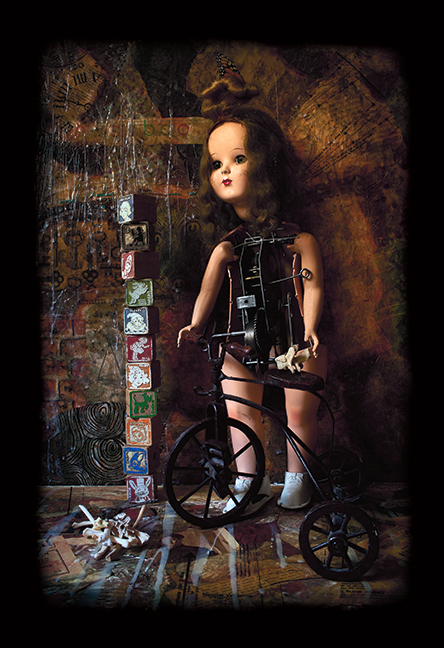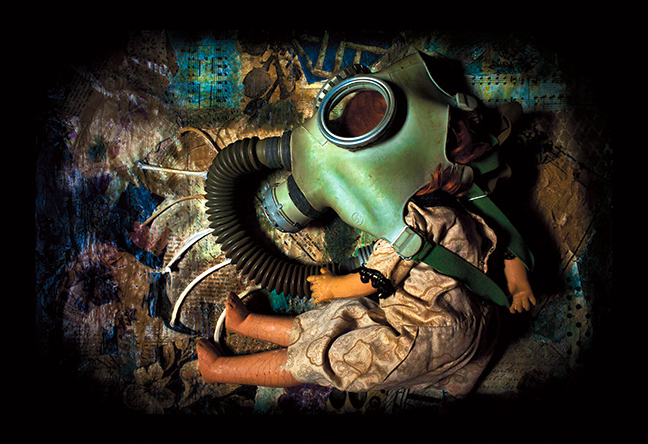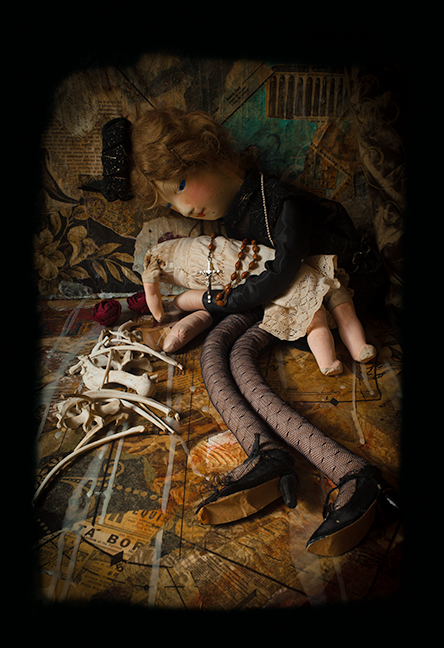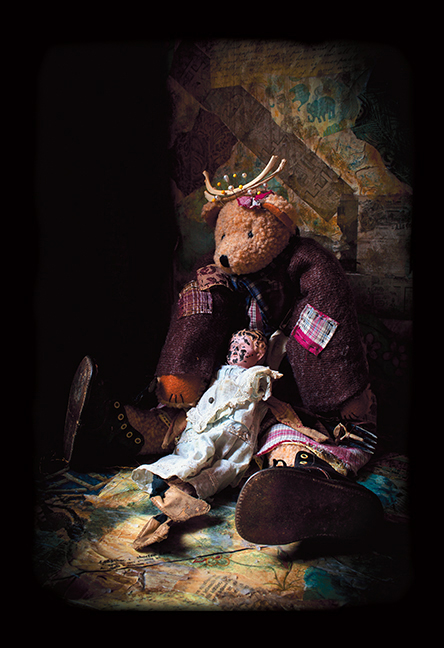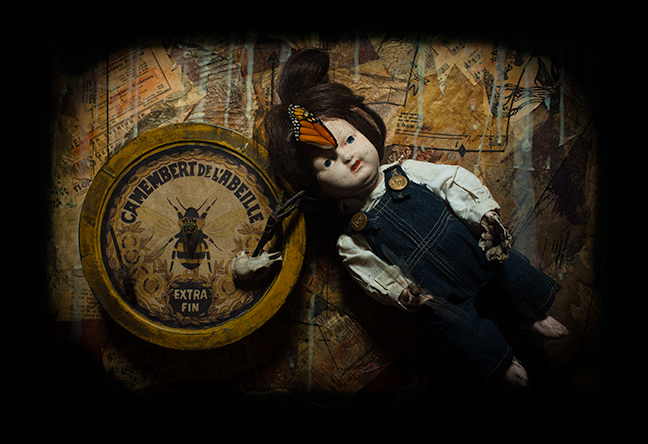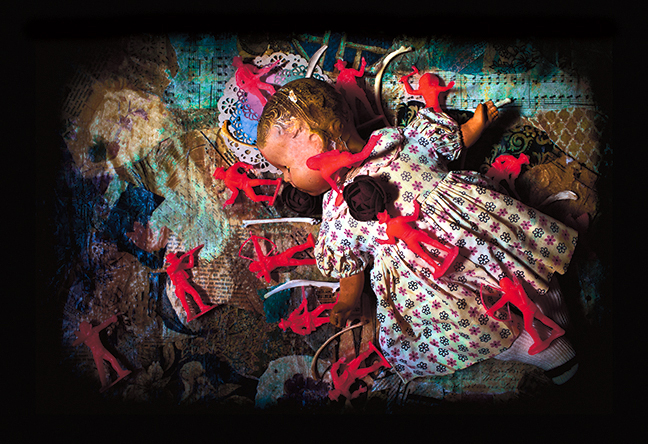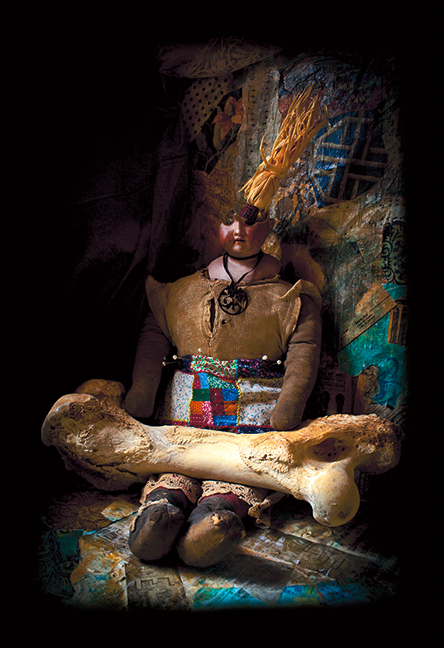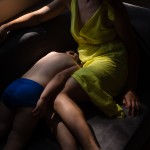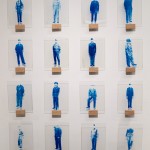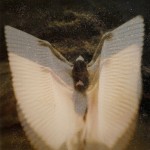Suzanne Gonsalez-Smith: The States Project: North Dakota
Broken dolls, toys, bones, and a rich palette of colored fabrics form a set of dynamic assemblages in Suzanne Gonsalez-Smith’s latest series, Lost Childhood. The studio set pieces were inspired by a kind of grief and lament over the erosion of the state of innocence parents and communities wish for the young. Gonsalez-Smith’s juxtapositions of playful items — blocks, stuffed animals, and flowers — with references to war and tumult through gas masks, toy soldiers, and bones emphasize the harshness with which the purity of childhood can be lost or taken from a child. Placed within a mix of ornate frames or against a patterned backdrop the ethereal collections call forth an earlier era — Gonsalez-Smith cites Golden age still life paintings as an inspiration — and suggest that lost childhoods are not specific to a particular time period.
As a developed series this project pushes Gonsalez-Smith’s ongoing investigations into memory, myth, and identity, a theme which she also pursues as the curator of the annual exhibition, “Of Memory, Bone, and Myth.”
I first knew of Suzanne and her work through this exhibition and was later acquainted with her on a visit to the University of North Dakota, where she heads the photography program. The photographic community in North Dakota is small, but its artists represent a broad array of approaches to the medium and its discursive potential. As a developed series, Lost Childhood, represents the diversity of work in the state.
Suzanne Gonsalez-Smith is an Associate Professor of Art at the University of North Dakota. She received her BFA from the University of New Mexico and her MFA from the University of Kentucky. The imagery of Gonsalez-Smith’s photographs contains the metaphor of lost childhood, memory and myth. Using the contemporary framework of her personal history, she explores personal loss, religious and cultural identities and the duality of life, using symbolism to evoke the inevitability of our own mortality.
Ms. Gonsalez-Smith is the recipient of many grants and awards and has exhibited at the Borges Cultural Center in Buenos, Aires, Argentina, Fredericksburg Center for the Creative Arts, The Center for Fine Art Photography, The Hampton Gallery, Circulo de Bellas, Madrid, Spain, Atelier Gallery 030202, Bucharest, Romania, the Kirkland Art Center in Clinton, NY, the Palazzo Italia in Berlin, Germany and the Saville Gallery MD.
Lost Childhood
Lost Childhood is my visual interpretation of dealing with the loss of childhood innocence, abuse and even death that affects so many children in the United States and worldwide. This stems from the current events of the day that are filled with an endless stream of data pertaining to violence against children.
Photography has a history of being linked to the recording of memory and therefore, also loss. The photographic image is a visual memory both real and fabricated in its design. It is capable of expressing the duality of the moment: life and death, dark and light, loss and fulfillment. In documentation, the act of death or loss is often portrayed as either romantic or brutally Gothic. Lost Childhood uses symbolism to create a visual metaphor rich in this duality. Childhood and death are referenced in every photograph.
Toys and dolls are the central theme in Lost Childhood and are used as metaphor for children who have suffered a loss of innocence. No toy is ever just a toy but rather a tool that teaches, aides in the growth of childhood development as well as gives clues to behavioral issues and the emotive personality of every child. Children who have suffered abuse or neglect often have toys that mirror their own fates. Often enough, these toys are tattered, fragile but also show the resilience of their owners as true survivors. Attachments to broken toys often symbolize some form of irreconcilable loss. A toy is a powerful tool to a child. Often, they anthropomorphize these individual toys beyond the simplistic physical properties giving them great influence over the mind and well being of a child.
Using the beauty and innocence of childhood, such as bright colors and patterns, in combination with bones, broken and tattered toys, antique dolls and vintage photographs, art imitates life. These items are meant to represent children who have suffered these losses using the metaphor and beauty of what it means to be a child in conjunction with items that suggest loss, abuse or death. Often, these dilapidated dolls and toys used are manipulated further by working both in a subtractive and additive fashion to create a further sense of age or alteration. Compositions are created against hand-painted and collaged background panels that give a unique richness to each photograph. Each panel created contains several layers of children’s illustrations, vintage papers, acrylic paint, spackle and encaustic wax for added texture and pop of color. All of these materials are meant to reference the beauty of childhood. Animal bones, halos, cracks, and surface deterioration are all made to preserve the inevitability that all life is subject to the laws of mortality. The use of this symbolism is a direct reference to the 16th and 17th century Vanitas still life paintings produced in Flanders and the Netherlands as well as the influence of my own Hispanic and Latina culture. Paintings during the Spanish Golden Age of painting have also greatly influenced this work through use of color, lighting and also content. Incorporating the use of the halo harkens back to my early childhood training in Catholicism. The bones in my composition also give reference to the idea of our temporal existence and connect us to those who have passed. The effect in this series creates art that reflects life in a manner that is hauntingly beautiful but humanly flawed and helps me make sense of an imperfect world. – Suzanne Gonsalez-Smith
You haven’t always lived in North Dakota. What are some of the things you feel changed in you after you moved here, or were perhaps brought out in you?
Before I moved to North Dakota, I was more used to photographing on location and largely a figurative photographer in Lexington, KY. Once here, I started working more in studio with both artificial and natural light. I also started finding the beauty in simple, everyday objects that I had previously dismissed before.
What is the best part about living and working in North Dakota as a photographer?
The light is very similar to the light in the environment of New Mexico where I lived while earning my undergraduate degree from The University of New Mexico. The skies are magical and the long winters make for a lot of productive studio hours.
Can you talk about what motivated you to create this series? How does this project relate to your other work?
My previous series, Relics, also incorporates children’s toys and dolls and was the precursor to “Lost Childhood.” The majority of all of my work has an edge or element of darkness that often speaks of our mortality. I gave birth in 2012 and my work forever changed. Suddenly, I became acutely aware of the horrors of the world in which we live in. The media is always filled with stories of events involving abuse or deaths of children. It is a very deep well from which I draw from for inspiration.
What were some of the thoughts and feelings running through you while creating Lost Childhood? What have you gained from making this work?
There is always a degree of sadness as I create the work. But, in the end, I feel I have gained some level of peace that gives the work a purpose.
What’s next? Anything new you can share?
I am in the infant stage of a new series called Apparitions. This series uses found photographs of groups of children to illustrate the 450,000.00 children that go missing every year in the United States.
Posts on Lenscratch may not be reproduced without the permission of the Lenscratch staff and the photographer.
Recommended
-
The 2024 Lenscratch 3rd Place Student Prize Winner: Mehrdad MirzaieJuly 24th, 2024
-
One Year Later: Nykelle DeVivoJuly 19th, 2024
-
One Year Later: Anna RottyJuly 18th, 2024
-
The Paula Riff Award: Minwoo LeeJuly 17th, 2024
-
Anastasia Sierra and Carrie Usmar: Talking MotherhoodJuly 16th, 2024

